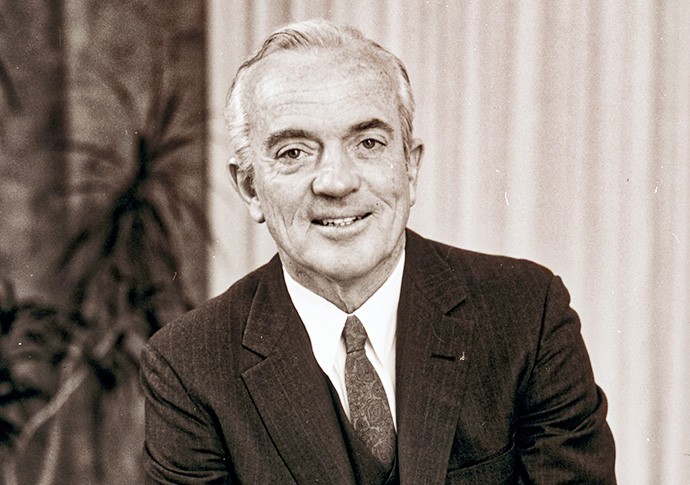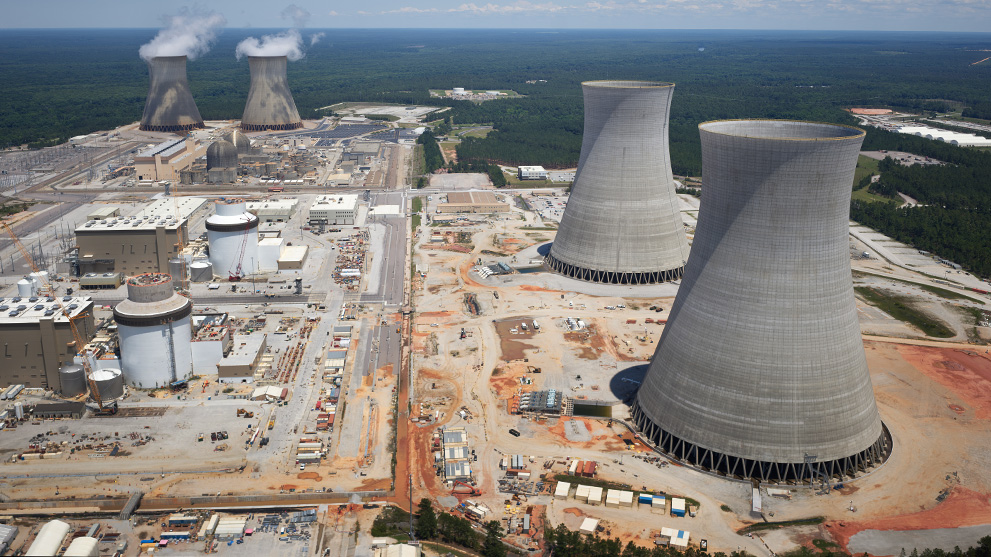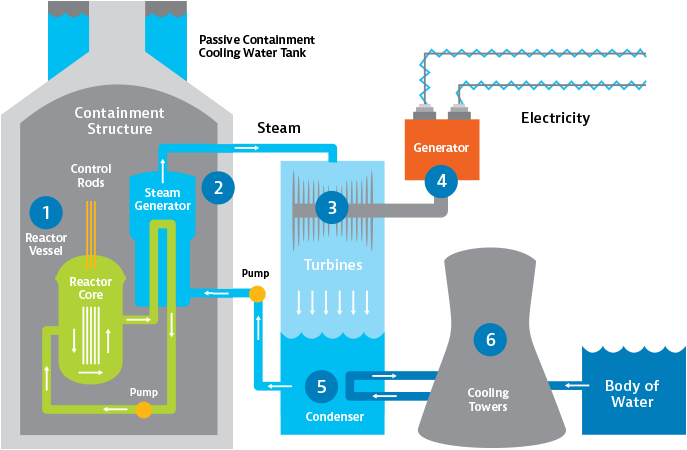Latest News: Vogtle Unit 4 enters commercial operation (4/29/2024)
Alvin W. Vogtle Electric Generating Plant
Waynesboro, Georgia
Energy generation type:
Nuclear
Jointly owned:
Georgia Power (45.7%), Oglethorpe Power Corporation (30%), Municipal Electrical Authority of Georgia (22.7%), and Dalton Utilities (1.6%)
Operated by:
Southern Nuclear
Units 1 & 2
Construction began:
August 1, 1976
Commercial operation:
Unit 1: June 1, 1987
Unit 2: May 20, 1989
Reactor type:
Westinghouse 4-loop
Pressurized Water Reactor
Total generating capacity:
~ 2,430 MW
Units 3 & 4
Construction began:
June 22, 2009
Commercial operation:
Unit 3: July 31, 2023
Unit 4: April 29, 2024
Reactor type:
Westinghouse AP1000
Generating capacity:
~ 2,234 MW
Plant Vogtle is the largest generator of clean energy in the United States.
Nuclear energy is a secure, dependable source of power for the United States. It is not subject to unpredictable weather or climate conditions, and consumers benefit greatly from the fact that nuclear fuel costs fluctuate less often than other fuel sources.
Georgia Power is committed to the safety of our employees, facility and, most importantly, our neighbors. Neighbors of Plant Vogtle should use this information brochure to stay informed about our facility and know what to do in the unlikely case of an emergency.
This media guide is designed to provide quick, specific information about Plant Vogtle, as well as the benefits of nuclear power, safety and security, emergency planning, and more. We hope this information will help you when you cover stories about Plant Vogtle or the nuclear power industry.
This brochure is an overview of Plant Vogtle, how nuclear energy works, radiation, the fuel, and more.
How it works:
A nuclear energy facility is not all that different from coal, oil or gas-fueled plants. The difference between traditional energy methods and nuclear energy is that nuclear plants do not burn anything.
At a nuclear energy facility, the heat used to make steam is produced by fission. Turbines, powered by steam, turn to produce electricity.
1. Water is pumped through the reactor core, heated by the fission process, pumped through thousands of tubes in the four steam generators and back to the reactor in a closed loop.
2. Cooler water in the steam generator comes in contact with the hot tubes and turns to steam.
3. The steam goes to the turbine and spins the turbine blades.
4. The turbine spins the electric generator to produce electricity.
5. The steam goes to the condenser where it turns to liquid again to continue the cycle.
6. The water that circulates through the condenser is cooled by large cooling towers.

Portrait of Alvin Vogtle. (Southern Nuclear)
Frequently Asked Questions
Plant Vogtle
How many people work at Plant Vogtle?
With Units 3 & 4 operational, more than 1,600 people – including engineers, mechanics, control room operators, chemists, electricians, security officers and others – oversee the operations of the four units 24 hours a day, seven days a week, 365 days a year.
What impact will Vogtle 3 & 4 have on Georgia?
Vogtle 3 & 4 are an essential part of Georgia Power’s commitment to deliver safe, clean, reliable and affordable energy for customers. The units will also play a significant role in supporting Southern Company’s goal of net-zero carbon emissions by 2050.
Nuclear power units like Vogtle are the most reliable energy source, able to generate electricity at full power 24/7 – more than twice as much as solar and wind resources. Nuclear power units also require fewer maintenance outages than coal or natural gas, making electricity even more reliable for Georgians.
What type of technology does Vogtle 3 & 4 use?
Vogtle 3 & 4 are Westinghouse AP1000 plants. The Westinghouse AP1000 technology utilizes a simplified, innovative and effective approach to safety. Plant simplifications yield fewer components, cable and seismic building volume, all which contribute to lower operation and maintenance costs. One of the safety features of the AP1000 include no required Operator action for 72 hours to maintain core and containment cooling in the unlikely event of an accident.
Nuclear Energy
Is nuclear safe and clean?
The benefits of clean nuclear power are many. First and foremost, nuclear power is a clean, safe, affordable and reliable source of electricity. Nuclear power provides 16 percent of Southern Company’s generation, and we have been operating nuclear plants safely and reliably for more than 40 years.
What is the fuel made of?
Uranium is used as nuclear fuel, and it has less price volatility than other fuel sources.
What happens to the nuclear waste?
After enough U-235 has been used up in the fission process, the fuel assemblies need to be removed and replaced with new fuel assemblies. However, the used fuel is highly radioactive. At most plants, used fuel is stored in large, steel-lined, concrete pools filled with water. These pools are known as spent fuel pools. Both water and concrete are excellent radiation shields. In these spent fuel pools, the water acts as an absorber, which prevents radiation from escaping from the pool. The water also keeps the fuel cool while the fuel decays, or becomes less radioactive over time. The water itself never leaves the inside of the plant’s concrete auxiliary building.
Vogtle 3 & 4
Our commitment to Reliability
We're always preparing for how to meet the future needs of our customers by strengthening the power grid – making it smarter and more resilient, to reduce outages and shorten restoration times.
To date, nearly 100 nuclear facilities in the U.S. provide about 20% of all electricity in the country. These facilities generate electricity 24 hours a day, seven days a week.
Learn more about Vogtle Unit 3 connecting to the grid.



